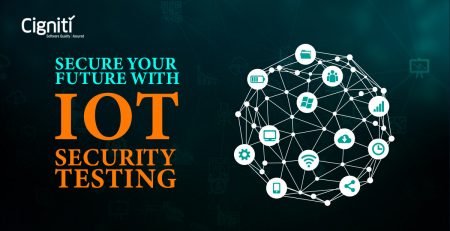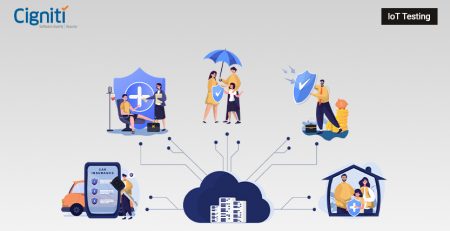Transform your business with Edge IoT Analytics
Many enterprises have intertwined internet-of-things (IoT) solutions to enhance operational processes, augment digital capabilities, and segregate products & services.
However, as enterprises install a varied array of IoT projects and use cases, each with unique requirements, many encounter challenges with using centralized cloud-based and data center analytic strategies.
To transmute vast streams of IoT data into insights in a secure, fast, and cost-effective way, enterprises must revisit their IoT strategies, architecture, and skills.
Here is where Edge IoT Analytics seeks attention.
Why Edge IoT Analytics
Edge IoT Analytics is a process that takes analytic computations for certain IoT use cases out of the data center or cloud and passes it as adjacent to the data sources as is essential and viable to alleviate security and compliance risks, empower real-time decisions and decrease costs.
According to Forrester, “Incorporating Edge IoT analytics can help organizations overcome the limitations of a fully centralized analytics approach. 69% say that prioritizing edge IoT for analytics for certain use cases would improve their ability to meet IoT objectives. 73% have already executed or are currently steering IoT programs across a wide variety of use cases”.
The key reason why the edge has become so prevalent in today’s digital era is because the “edge” as we know it is becoming progressively intelligent.
Intelligent edge computing IoT analytics typically have more influential processing proficiencies designed to examine data at the edge.
According to a latest research on Industrial IoT edge computing conducted by IoT Analytics, “Intelligent edge compute resources are swapping “dumb” legacy edge compute resources at a rapid pace. While Intelligent edge compute makes up a small portion of the market today, it is expected to grow much faster than the overall market and thus gain share on the latter. The propaganda about edge computing is necessary as the replacement of “dumb” edge computing with intelligent edge computing has major consequences for businesses in all sectors, from manufacturing facilities, consumer electronics and oil and gas wells to machinery OEMs.”
Many businesses have used cloud platforms to analyze their IoT data by applying cutting-edge analytics models and leveraging clouds’ extensive processing power, connectivity, and storage capabilities.
Nevertheless, they have recognized limitations to cloud analytics which are predominantly significant for efficacious IoT use case deployment including: lack of real-time analytic capabilities, security or compliance concerns, and high data transit costs.
Businesses face limitations with IoT data analysis in the Cloud
Many enterprises have moved to cloud platforms to connect rich device data with low cost, elastic global infrastructure.
This tactic originally permitted businesses to expedite their development of connected products and industrial internet solutions.
However, as enterprises proliferate their IoT efforts, fully centralized or cloud-only approaches are expected to stumble.
Intensive IoT applications for data and work loads are subject to challenges while using cloud computing platforms.
According to a research conducted by Forrester,”98% of the respondents cite challenges with analyzing IoT data in the cloud. Maximum pitfalls of analyzing IoT data in the cloud include abridged accessibility and ability to make real-time decisions, security worries, and increasing costs.”
It is not always economic, practical, or even lawful to move, store, and analyze IoT data into a core cloud infrastructure as IoT use cases often have unique real-time data analysis requirements.
While businesses face limitations with IoT data analysis in the cloud as they proliferate, enterprises are leveraging IoT data as a powerful source of insight.
Enterprises are leveraging IoT data as a powerful source of insight
The expansion of interconnected IoT devices coupled with continuous innovation enable enterprises to collect an unprecedented amount of IoT data.
With data driven decision-making regulating every aspect of our lives, data and insights have become treasured assets for any enterprise.
The value of this data is measured by how enterprises analyze and draw insights for better outcomes.
According to a recent study by Forrester, “IoT solutions frequently allow digital transformation by encompassing software control of physical assets and providing a rich source of data including location, status, and presence of connected assets, products, and processes. 56% of surveyed global enterprises have already adopted or are expanding deployment of IoT solutions, another 17% of enterprises are currently piloting IoT programs. These IoT initiatives are applied by enterprises across geographic regions in various industries and spanning a wide range of use cases.”
While enterprises are leveraging IoT data as a powerful source of insight, addressing this data, analytics, and security issues remain a challenge.
Challenges in addressing IoT data
Gaps in analytical skills, security concerns, and real-time data analysis challenges are some of the key IoT data analysis barriers.
According to Gartner, “The staple inputs for IoT analytics are streams of sensor data from machines, medical devices, environmental sensors and other physical entities. The challenge is going to be how to manage and store that data. Managing and storing this data in an efficient and timely manner sometimes requires event stream processing platforms, time series database management systems and specialized analytical algorithms. However, many BI and analytics practitioners lack expertise in the streaming analytics, time series data management and other technologies used in IoT analytics.”
Amidst these challenges, Intelligent Edge IoT Analytics has been a game changer to many enterprises and has brought in several business and operational benefits.
Edge IoT Analytics – Business benefits and key recommendations
According to a recent survey conducted by Forrester, “Irrespective of their level of acceptance, all IoT decision makers agree prioritizing edge IoT analytics for certain use cases can improve their capability to meet IoT objectives and 43% describe the level of improvement as significant.”
Cost reduction, improved real-time decision making, better business processes, preservation of privacy, enhanced security capabilities, and superior customer experience are few of the important benefits realized by businesses that deployed edge IoT analytics.
Key recommendations gleaned from reliable research reports include –
- Simplify synchronization between IT and operations to recognize IoT use case and architecture necessities.
- Recognize IoT use cases to address your firm’s present and forthcoming business transformation goals.
- Contemplate your needs for edge-based IoT data analytics.
- Pursue assistance from partners to fast-track your edge IoT initiatives.
Espousing Edge IoT Analytics can improve IoT outcomes as agreed by many IoT decision makers.
According to a latest report published on IoT Analytics, “IoT edge computing resources are becoming increasingly intelligent and are estimated to reach $30.8B by 2025, up from $11.6B in 2020”.
Closing thoughts
Enterprises that manage physical assets can reap tremendous cost savings and unlock new opportunities by switching to modern, intelligent edge computing architectures.
Cigniti is a pioneer in providing IoT testing services for seamless performance and functionality of your intelligent products.
Our IoT Test Automation framework provides reusability and modularity, just-in-time reporting, extensibility and service virtualization, and continuous integration of custom & packaged applications. Additional benefits include:
- Portability and forward integration
- Accelerators to shorten framework roll-out
- High performance & short duration of test execution
- Scalable & reusable test across different platforms
Global organizations have utilized our IoT Quality Assurance and Testing solutions to achieve end-to-end functional and non-functional testing for their IoT implementations. To address the heterogeneity of technology platforms, devices, and protocols, Cigniti’s IoT testing solutions provide the following key differentiators for IoT testing:
- Robust IoT testing infrastructure lab, consoles, simulators, test racks, etc. that helps reduce Op-Ex
- BlueSwanTM: Cigniti’s next generation proprietary testing platform that can expedite your digital transformation journey, and Customer Experience Sentiment Analyzer (CESA) for real-time insights across mobile, web, and device channels.
- Strong multi-disciplinary approach & multi-domain capabilities
- Expedited testing using simulators and service virtualization
- Collaborative testing using a globally located team
Schedule a discussion with our IoT Testing experts to know more on how to transform your business with Edge IoT Analytics.





Leave a Reply